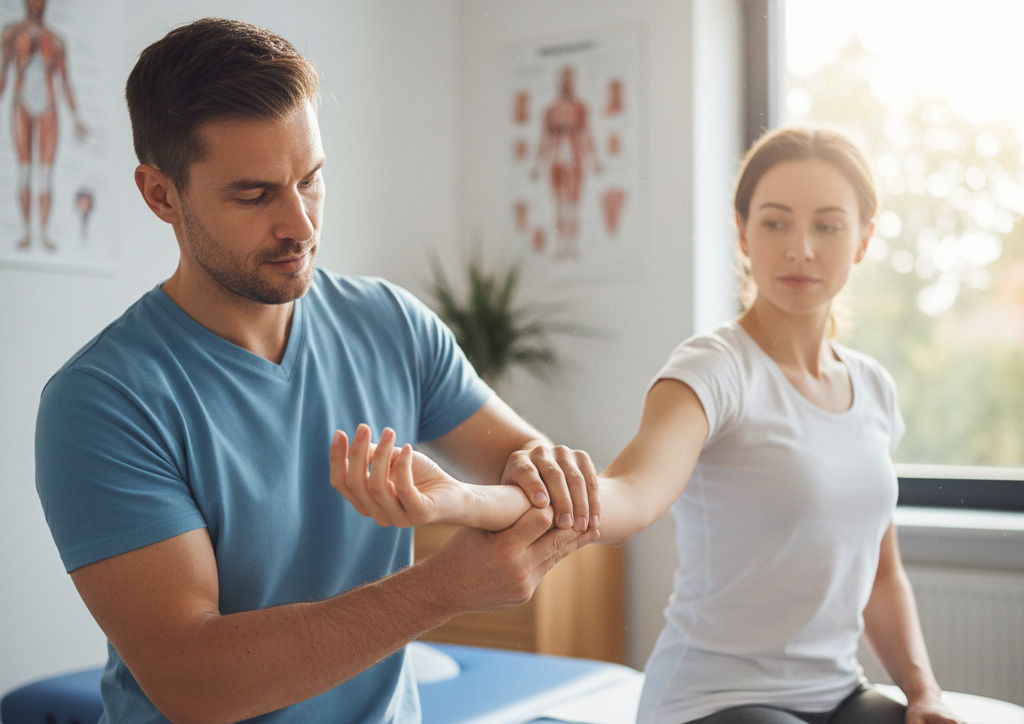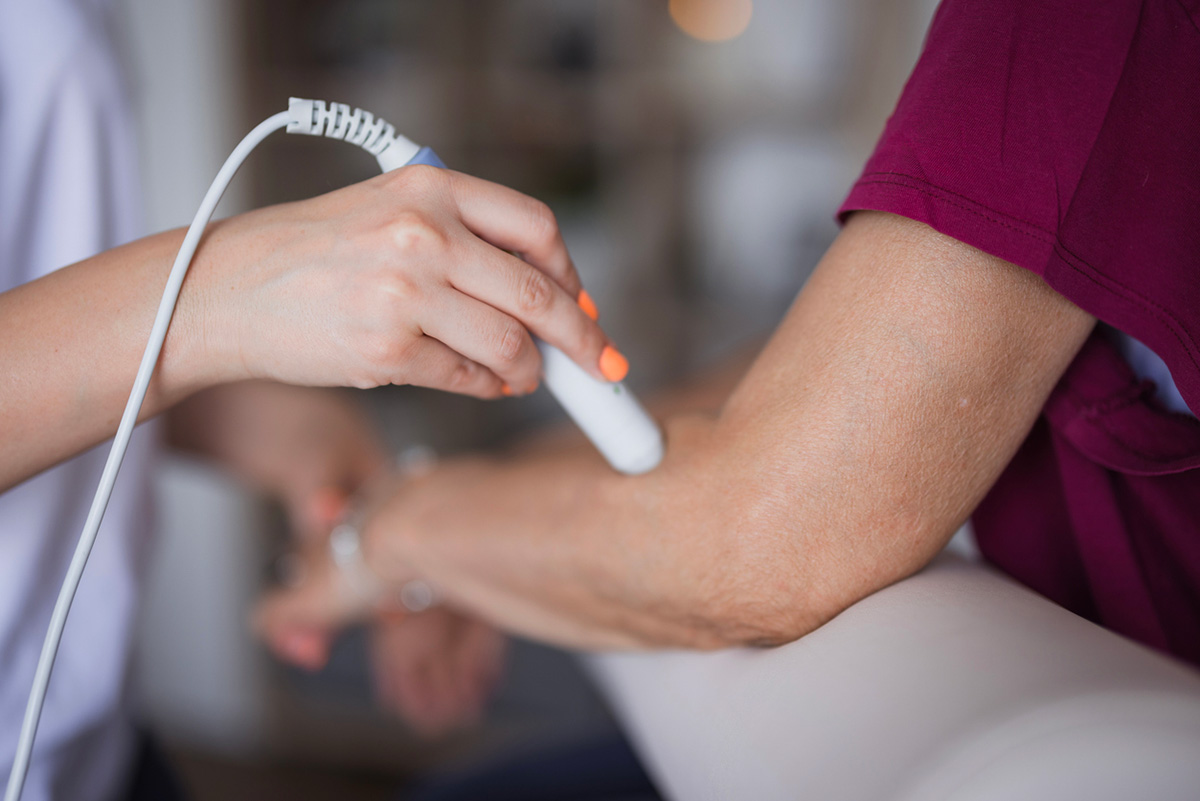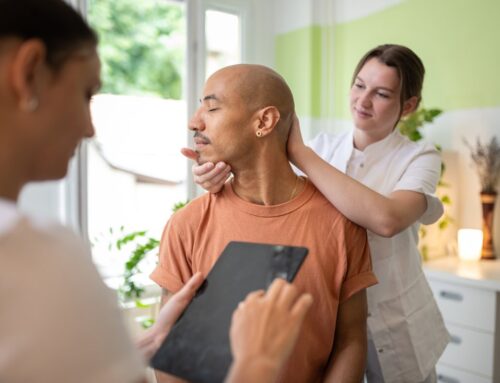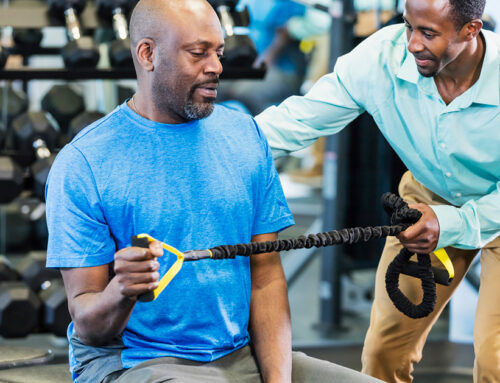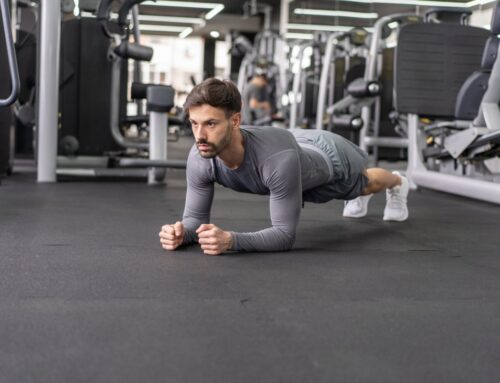How to Relieve Tennis Elbow and Golfer’s Elbow: Expert Physiotherapy Tips from Burlington, ON
If you’ve ever felt a sharp ache or persistent soreness on the outside or inside of your elbow, you may be dealing with tennis elbow or golfer’s elbow. Despite their names, these common conditions affect far more than just athletes. Whether you spend your days working at a desk, lifting weights, or gardening. These repetitive strain injuries can interfere with daily activities and your ability to stay active. At Burlington Sports Therapy, we help patients recover from elbow pain through a combination of hands-on treatment, targeted exercises, and education on how to strengthen and protect the tendons around the elbow.
Understanding Tennis Elbow and Golfer’s Elbow
Tennis elbow (lateral epicondylitis) affects the outer part of your elbow, where the forearm tendons attach. It’s typically caused by repetitive gripping or wrist extension, which is common in tennis players, but also in anyone who uses their hands for repetitive tasks (like typing, painting, or carpentry). Golfer’s elbow (medial epicondylitis), on the other hand, causes pain on the inner part of the elbow. It’s often triggered by repetitive wrist flexion or gripping movements, such as those used in golf, weightlifting, or even carrying heavy bags.
Why “Itis” is a Myth: Tendinopathy vs. Inflammation
Although I referred to them as “itis” injuries above, that’s only because they have historically been named that way; however, the literature suggests that they are not primarily inflammatory conditions. Why is this relevant? The focus of treatment should not be directed at inflammation but rather tissue remodelling and load management. This is how professionals can help!
How Physiotherapy Helps Tennis Elbow and Golfer’s Elbow
At Burlington Sports Therapy, we start with a thorough assessment to identify the root cause of your pain and movement limitations. Treatment may include manual therapy, which is a hands on treatment by the physiotherapist or chiropractor to reduce tension in the muscle and alter the pain sensitization. Shockwave therapy might also be considered. Shockwave therapy is performed using a handheld device that is similar to a miniature jackhammer, which stimulates tendon healing and also alters the sensitivity of the painful area. Without question, every case of tennis elbow and golfer’s elbow requires load management and progressive exercise therapy. Over time, we gradually load the tendon to rebuild strength and resilience. Teaching you how to move, lift, and perform daily tasks without aggravating the injury is also important.
Strengthening and Recovery: Farmer’s Walks and Dead Hanging
Once pain is controlled, strengthening exercises become the key to long-term recovery and prevention. Two underrated yet powerful exercises for elbow health are the farmer’s walk and dead hang. They are not usually suitable for someone experiencing tennis or golfer’s elbow, however! This is a good example of load management, wherein these exercises are quite vigorous and challenging for these areas. When symptomatic, these will likely be too much load for the painful area. However, this does not mean they are bad exercises. It just means that the timing must be right – a good time to consult with a knowledgeable practitioner who can assist in making these crucial decisions. Farmer’s walks and dead hangs are excellent ways to improve grip strength, which is not only linked to longevity but has the potential to reduce the likelihood of getting tennis elbow or golfer’s elbow from light tasks of daily living.
Farmer’s Walks
This exercise involves walking while holding a heavy weight in each hand. Think of it as “functional grip training.” Farmer’s walks strengthen the forearms, shoulders, and grip, improving tendon endurance and stability around the elbow.
Dead Hanging
Hanging from a pull-up bar might look simple, but it’s quite a difficult exercise! Many people feel that it’s a great way to decompress the shoulders and strengthen the grip and forearm flexors. Again, it probably isn’t the best option for someone experiencing elbow pain, as with golfer’s or tennis elbow, but once the condition has resolved, it can be a great way to improve the overall capacity of the area.
When to Seek Professional Help
If your elbow pain has lasted more than a few weeks, or if it’s affecting your ability to grip, lift, or perform daily activities, it’s time to see a registered physiotherapist or one of our chiropractors at Burlington Sports Therapy. Early intervention can make a big difference in recovery time and help you avoid chronic pain or compensatory movement patterns. At Burlington Sports Therapy, we can design a personalized program to relieve pain, restore strength, and get you back to doing the activities you love, whether that’s swinging a golf club, hitting the tennis court, or simply working without discomfort. Although farmer’s walks and dead hangs are great exercises for strengthening your grip, they most likely aren’t appropriate for someone with elbow pain. A careful discussion with your practitioner is recommended.
By: Dr. Kevin McIntyre B.Kin., DC
Burlington Sports Therapy – 905-220-7858

